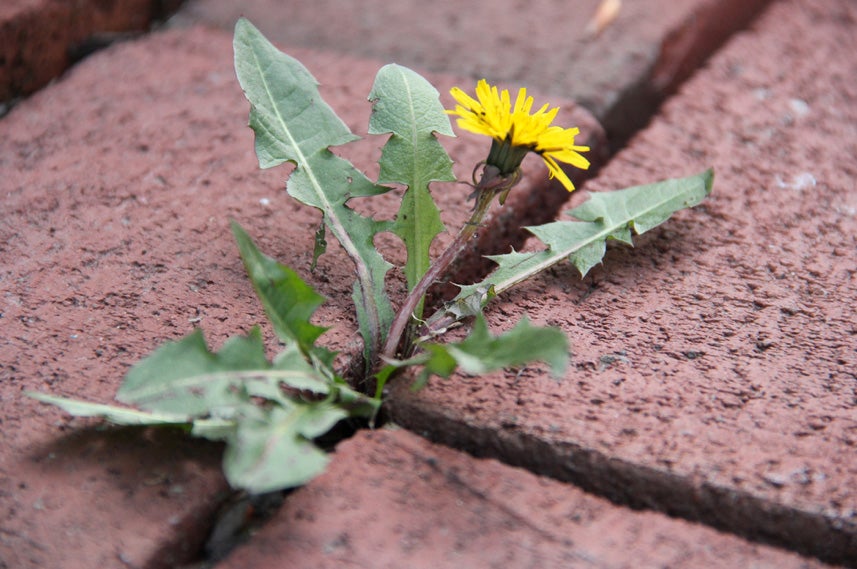Learn how to reign in your evergreens!
ListenMike McGrath explains what to do when your yard suddenly has sun, how to rid your summer squash of stinkbugs, the best way to kill weeds growing in your walkway, why you need to watch out for Neonicatoid, how to transplant flower bulbs and how to reign in your evergreens.
Questions of the Week:
“I’m wondering how I can bring a row of hemlocks that have grown to about 12 to 15 feet high and 6 to 8 feet wide down to about eight feet high and in a couple of feet without damaging them.”
— Will in Naugatuck, CT
Learn how to bring your hemlocks down in size »
-

Photo submitted by caller
Highlights from show for August 9, 2014:
What to do when your yard suddenly has sun
Tim from Frederick, Maryland is worried about his landscape that has changed significantly after his neighbor took down two huge trees that were shading his shade garden and then four oak trees were taken out by a strong wind. Tim’s yard is all of sudden full sun from 10 am onward and his shade garden is really unhappy. Mike says since this summer has not been very stressful that his instincts are good to not make any rash decisions, so Tim is welcome to wait until fall to move some of these shade loving plants. Mike does warn to leave the Hosta alone till the spring. When they start to green up in the spring, that is a good time to divide them and replant them. Mike reiterates that it’s best not to panic and move them now.
Stinkbugs on your squash
Dianna from South Jersey has a raised bed with a trellis where she grows all her winter squashes. She has been over run by stink bugs that kill the plants. Mike says they are a very difficult pest to keep away. Mike adds that the plants Dianna is growing are constantly flowering and that makes it difficult. “You could spray the heck out of these plants with one of the spenosads.” This is a feeding deterrent. The other option is Neem and this is an ancient organic insecticide that is made out of the seeds of a tree grown in India. Mike says it is a great anti-feedant, but if the pests eat the plant they will die. Mike adds that our best hope to get rid of these bugs is a parasitic wasp that has been bred to kill these pests naturally.
-

Photo by Flickr user John Setra
Ridding your brick walk of weeds
Fran from Bensalem near Philadelphia is having issues with grass growing through a brick patio. Mike says the truth is that nature will take over no matter what. The debris from fall leaves and weed seeds blow in and so it is almost impossible to have one of these areas without weeds growing in them. Fran wants to know how he can get rid of these weeds organically. Mike says he has three choices to deal with this: Flame weeder, which is Mike’s favorite choice. A flame at the end of a long wand is a great way to dehydrate the weeds and they die. The second is to shoot them out with water or buy small slow growing plants bred to deliberately grow between brick that give a lovely appearance. Some are even scented so you get that scent as you walk among the pavers.
-

Photo by Flickr user joewillrich
Watch out for Neonicatoid
Helen in Longvalley, New Jersey is calling after reading the July issue of nature, which had a summing up article about seeds being soaked in neonicotoid and they talked about it being in food crops. Mike knows what she is talking about right away and explains that Neonicatoid’s are real bee killers and a pesticide that may be one of the biggest culprits of hive collapse disorder for honey bees. A lot of plants are sprayed with them as they are ready for sale. Also, used as seed treatments the neonicatoid can systemically get into the plant. Mike reminds Helen that this is one of the reasons to buy organic. Mike suggests that one way to really ensure your plants are not sprayed is to buy organic seeds and start them yourself and then you know what you are getting, but otherwise you can find a huge market of organic starter plants, even this fall.
Transplanting bulbs
Steve in Hartford, Connecticut is going to have to move his Daffodil and Iris bulbs, because there is some construction going on that will impact his garden. Mike warns Steve to be careful, but if he knows where the bulbs are, to gently dig around the outside of the area and get all the bulbs up. Then he instructs Steve to hang the naked bulbs in onion bags in a cool, dark and dry spot. Then in October he can put them back in the ground. Mike suggests that Steve move his Iris’ to another patch of land now and just “heel” them in, which means planting them high so the rhizome is not totally covered. Steve optimistically reminds us “Nature will survive”.
WHYY is your source for fact-based, in-depth journalism and information. As a nonprofit organization, we rely on financial support from readers like you. Please give today.

